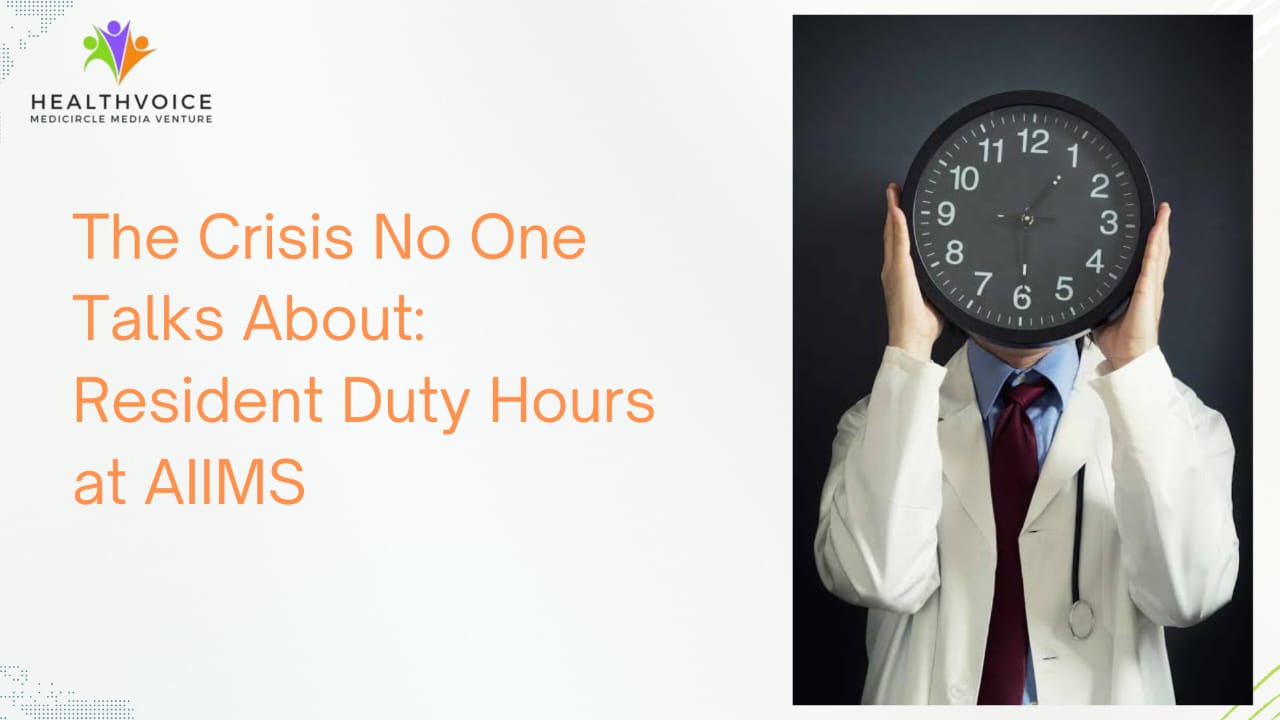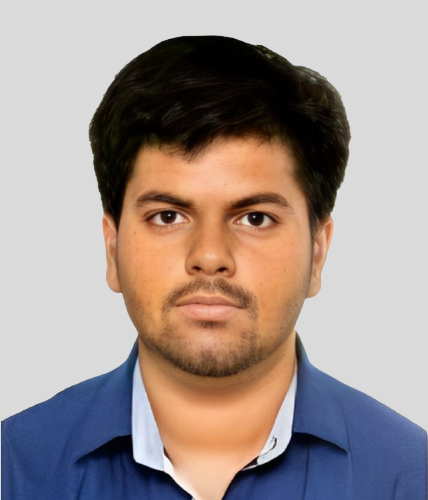The Crisis No One Talks About: Resident Duty Hours at AIIMS
Doctors have begun to speak, and their words carry the weight of a generation that refuses to accept suffering as destiny.

The corridors of India’s premier medical institution, the All India Institute of Medical Sciences, carry the weight of more than patient suffering. They carry the fatigue, exhaustion, and quiet despair of resident doctors who are stretched far beyond human limits. For years, the burden of endless hours, sleepless nights, and back-to-back emergencies has remained an unspoken reality, hidden behind the white coats and the patient smiles of young doctors. The recent order issued by AIIMS on duty hours, limiting residents to 12 hours a day and 48 hours a week with a guaranteed weekly holiday, should have been a historic step in changing this narrative. Yet, the journey from words on paper to action on the ground is proving to be another long battle, with residents and their associations demanding its urgent implementation.
The significance of this order goes far beyond scheduling or logistics. It strikes at the very heart of how a healthcare system values its frontline healers. At a time when the mental health of resident doctors has reached breaking point, when stories of burnout, depression, and even tragic suicides have shaken the medical fraternity, the insistence on reasonable duty hours is a question of survival. It is about whether the healthcare system sees its doctors as humans first or as unbreakable machines. The United Doctors Front, led by Dr. Lakshya Mittal, has taken this demand to the institute’s administration with remarkable clarity, insisting that the well-being of residents cannot be compromised any longer.
The association has pointed out that despite the official memorandum dated 21st August 2025, many residents across AIIMS centers continue to face inhuman rosters, where duty hours stretch endlessly with little regard for rest. Some residents whisper their grievances quietly, fearing action or discrimination if they demand what has already been promised to them. The irony is that an order designed to protect doctors now hangs as a shadow, where asking for its implementation is seen as a risk. For the United Doctors Front, this is unacceptable. Their letter to the Director of AIIMS makes it clear that transparent rosters, accurate record-keeping of hours, and strict oversight are not optional luxuries, they are the minimum protections required for resident doctors to work without exploitation.
Dr. Lakshya Mittal has argued with that this is about the future of healthcare. Residents pushed to exhaustion are more prone to errors, and those errors affect patients. Protecting doctors is, in essence, protecting patients. The UDF’s demand for strict enforcement is therefore not a selfish cry but a call for safer hospitals. Their insistence on grievance redressal mechanisms, awareness for new postgraduate students, and protection from retaliation is a blueprint for fairness. It is a reminder that the culture of silence around overwork must end, replaced by accountability and transparency.
The association has even filed an RTI, seeking details on who is responsible for enforcing the order and what actions, if any, have been taken so far. It is an unusual but necessary step, signaling the level of distrust that has crept into the system. If resident doctors must turn to the Right to Information Act to know whether their basic rights are being protected, it raises uncomfortable questions about governance within institutions meant to set national standards.
Yet, the challenge is undeniable. AIIMS is not just any hospital; it is a lifeline for millions across India. The patient load is huge, the demand for specialists is endless, and the current strength of residents is far from sufficient. Even the Resident Doctors Association of AIIMS Delhi, represented by Dr. Sai Kaustubh, has acknowledged that enforcing a strict 48-hour week is near impossible without increasing manpower. Residents need shorter hours, but patients cannot be abandoned. The only sustainable way forward is systemic reform, where the government invests in increasing resident positions, strengthening secondary hospitals, and ensuring that tertiary institutions are not drowning in cases that could have been managed elsewhere.
This debate over duty hours is not new. Across the world, medical communities have wrestled with the balance between training, service, and human limits. In the United States, for instance, regulations cap resident work at 80 hours a week, and even that has sparked debate on whether it is too high. European countries follow stricter standards, with many enforcing a 48-hour limit. India has lagged far behind, normalizing 100-hour work weeks as a rite of passage. The AIIMS order is therefore an attempt to align with global norms and acknowledge that exhaustion is not an acceptable teacher.
For healthcare professionals across the country, this controversy is more than an internal matter at AIIMS. It is a mirror reflecting the larger state of medical training in India. If the country’s most prestigious institute struggles to implement humane rosters, what hope exists for smaller hospitals and state medical colleges where residents toil in near invisibility? The story of AIIMS duty hours is a story of the Indian doctor, trapped between public expectations of tireless service and institutional neglect of their own well-being.
The question that arises is when doctors collapse, who heals the healers? Patients trust that their doctors will be alert, empathetic, and capable, but a resident doctor awake for 36 hours straight is a danger to himself and his patients. Medical excellence cannot be built on broken bodies and exhausted minds. AIIMS, by implementing its own order in spirit and not just in letter, has the opportunity to lead a cultural shift across India. By showing that patient safety and doctor well-being go hand in hand, it can redefine what it means to be a truly world-class institution.
The demands of the United Doctors Front may seem basic, but they carry revolutionary weight. A transparent roster published online prevents manipulation. Accurate overtime records stop exploitation. A weekly holiday offers not just rest but dignity. Protection from retaliation assures residents that their voices matter. And grievance mechanisms restore faith that justice can exist within the system. These are not luxuries; they are the bare minimum for a profession that carries the nation’s health on its shoulders.
For policymakers, the AIIMS duty hour debate is a wake-up call. Investing in infrastructure, expanding medical seats, and ensuring equitable distribution of patient load across hospitals are not optional projects, they are urgent necessities. Otherwise, India risks losing its best doctors to burnout, despair, and migration. Already, the lure of better working conditions abroad pulls away many talented professionals. Without reforms at home, the brain drain will only intensify, leaving India’s already strained healthcare system gasping.
The AIIMS duty hours controversy is thus more than a dispute between doctors and administrators. It is a defining test for how India sees its healthcare workers. Are they to be celebrated only on Doctors Day, garlanded in speeches, but left to suffer silently the rest of the year? Or are they to be treated as professionals whose well-being is inseparable from the nation’s health? The answer will determine not just the lives of resident doctors but the future of medical care in India.
The coming weeks will reveal whether the AIIMS administration listens to the voices of its residents or retreats behind bureaucracy. But one thing is clear that silence is no longer an option. Doctors have begun to speak, and their words carry the weight of a generation that refuses to accept suffering as destiny. If AIIMS acts decisively, it will not only heal its own residents but send a message to every medical college in India that the age of endless duty hours must end, and the age of human medicine must begin.
For now, the fight continues in the wards and offices of AIIMS, where duty rosters are more than timetables. They are battlefields where young doctors struggle not just for rest, but for recognition of their humanity. And until the order is fully enforced, the question will echo louder with each passing day: who heals the healers?
 Sunny Parayan
Sunny Parayan
#healthvoice #DoctorsDeserveRest #AIIMS #ResidentDoctors #MedicalReform #HealthcareJustice #EndDoctorBurnout #ProtectOurDoctors #SafeDoctors #SafePatients
